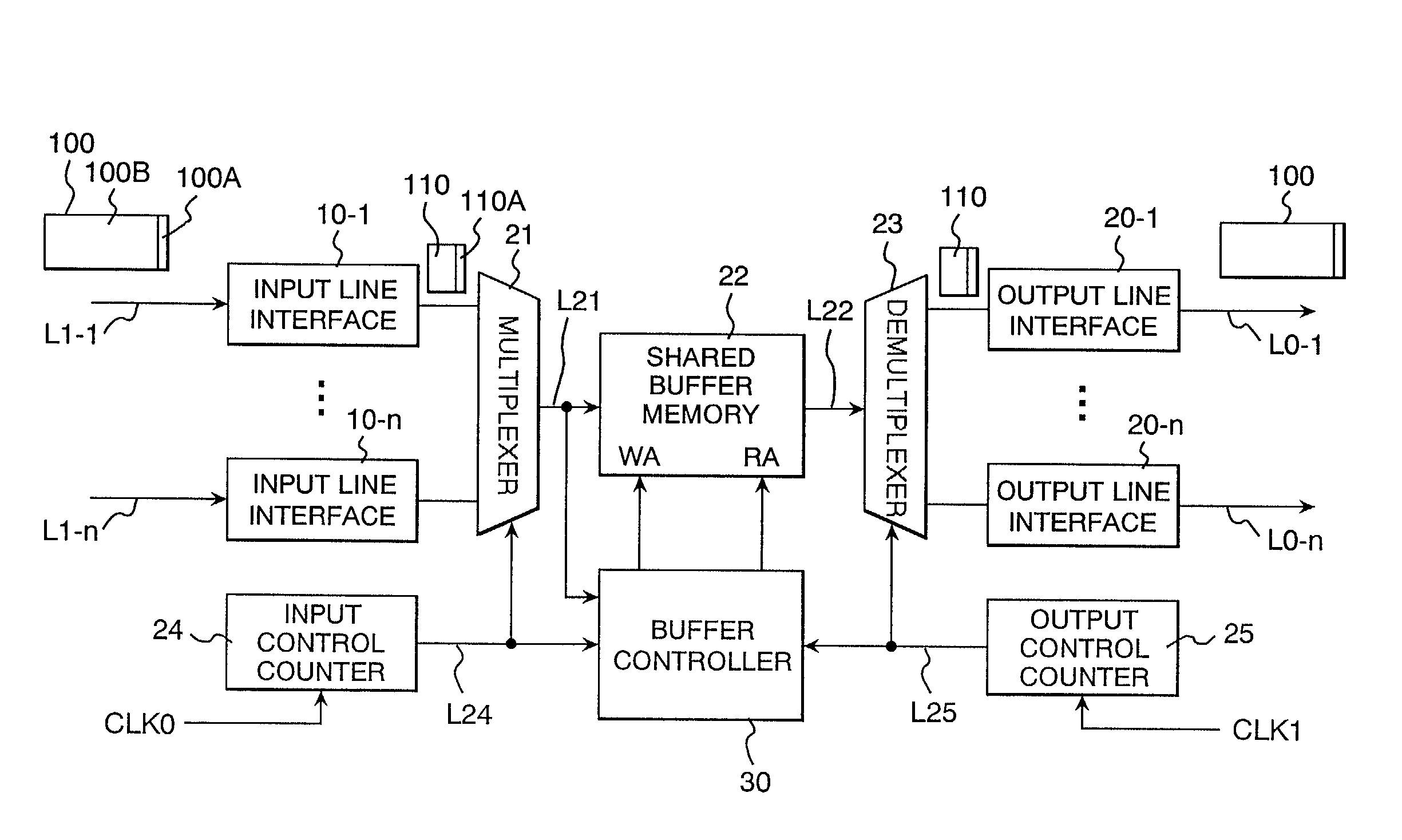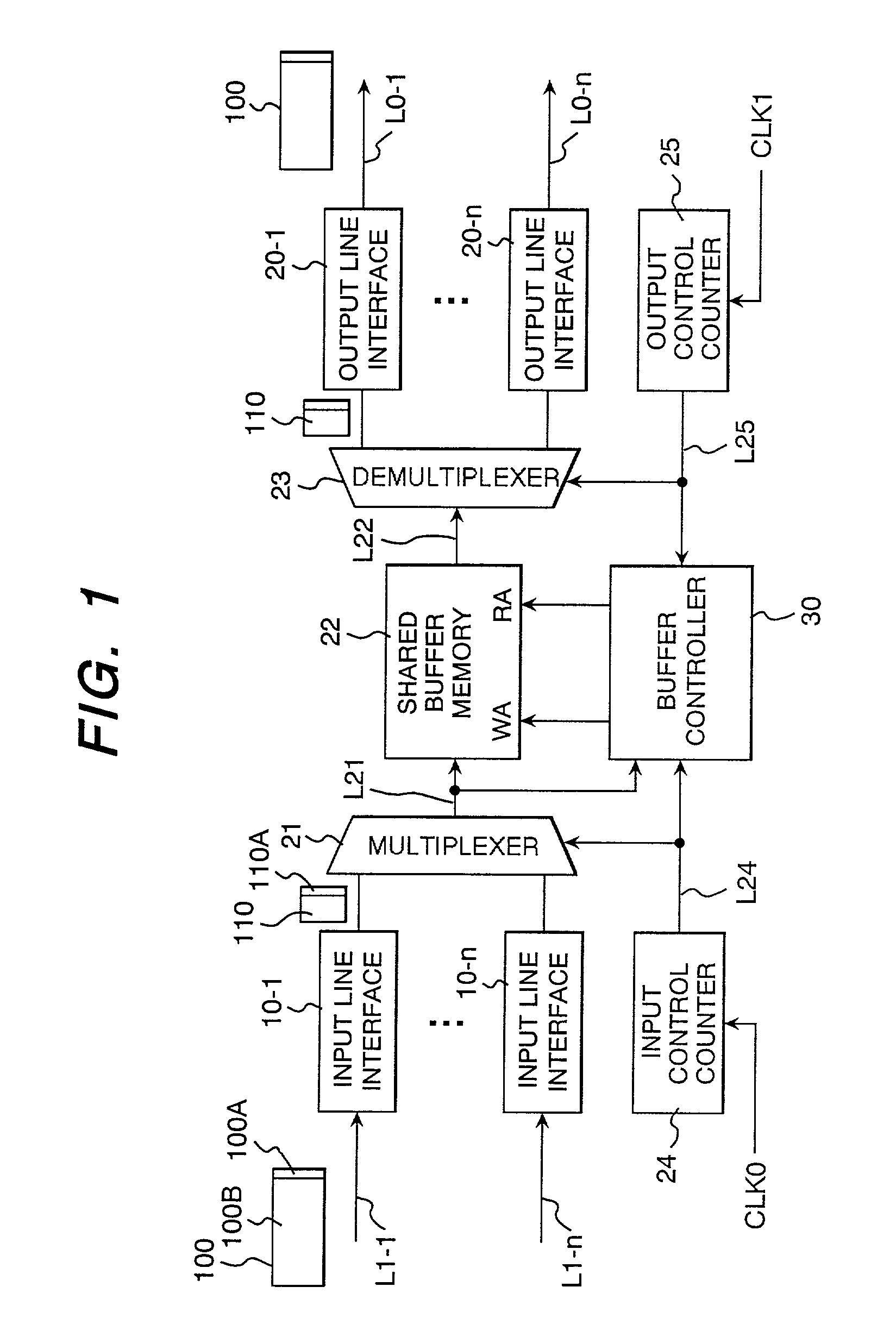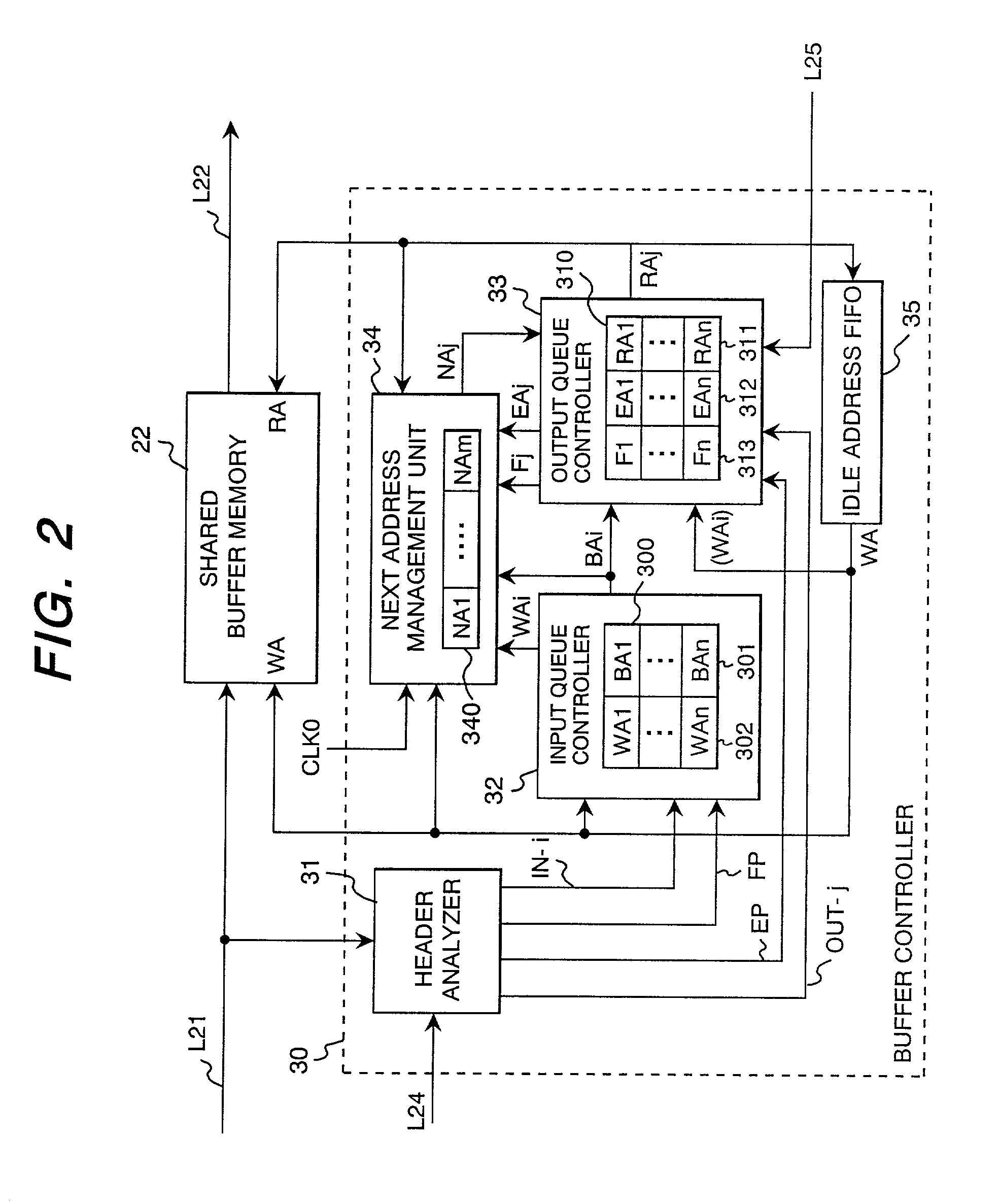Shared buffer type variable length packet switch
a packet switch and variable length technology, applied in the field of packet switches, can solve the problems of low packet switching speed, and low buffer memory use efficiency
- Summary
- Abstract
- Description
- Claims
- Application Information
AI Technical Summary
Benefits of technology
Problems solved by technology
Method used
Image
Examples
first embodiment
[0044]FIG. 2 is a block diagram showing the buffer controller 30. The buffer controller 30 includes a header analyzer 31, an input queue controller 32, an output queue controller 33, a next address management unit 34, and an idle address memory (FIFO) 35 for storing idle addresses of the shared buffer memory 22.
[0045]The header analyzer 31 analyzes the internal header of each data block appearing on the signal line L21 and generates input line number IN-i, output line number OUT-j, a head indication flag signal FP indicating whether the input data block is the first block of the received packet or not, and a tail indication flag signal EP indicating whether the input data block is the last block of the received packet or not.
[0046]The input queue controller 32 has an input queue address table 300 showing, for each input line, an address 301 (packet head address BAi (i=1 to n) ) of the first data block registered in the input queue and an address 302 of the latest data block (latest ...
third embodiment
[0102]FIG. 15 shows the buffer controller 30 having a broadcasting or multicasting function of transferring the same packet to a plurality of output lines. The buffer controller 30 shown here has, in a manner similar to the buffer controller 30 of the second example shown in FIG. 9, the header analyzer 31, input queue controller 32, output queue controller 33B, next address management unit 34B, and idle address FIFO 35 and has, as a new element, a read address release controller 36.
[0103]Each of the input line interfaces 10-i (i=1 to n) adds an internal header for designating a plurality of output lines to each of data blocks obtained by dividing a received packet from the input line LI-i when the received packet is a broadcast (multicast) packet to be forwarded to a plurality of output lines. In order to designate a plurality of output lines at the same time, for example, it is preferable to employ a bit pattern as the contents of the output line number field in the internal header...
second embodiment
[0108]The addresses BAi and WA set in the output standby buffers 330-1 to 330-n are, in a manner similar to the second embodiment, transferred to the next read address registers 311-1 to 311-n and the last read address registers 312-1 to 312-n. In accordance with the read address RAj indicated by the next read address registers 311-1 to 311-n, the data blocks are read out from the shared buffer memory 22. Regarding data blocks belonging to a broadcast packet, as described above, the same linked address list is registered in a plurality of output queues, the same data block is repeatedly read out a plurality of times.
[0109]In the first and second embodiment directed only for a uni-cast packet, as shown in FIGS. 2 and 9, it is sufficient to release the read address RAj to the idle address FIFO 35 when a data block is read out from the shared buffer memory 22. In contrast, in the case where broadcast packets are processed as in the third embodiment, it is necessary to confirm the compl...
PUM
 Login to View More
Login to View More Abstract
Description
Claims
Application Information
 Login to View More
Login to View More - R&D
- Intellectual Property
- Life Sciences
- Materials
- Tech Scout
- Unparalleled Data Quality
- Higher Quality Content
- 60% Fewer Hallucinations
Browse by: Latest US Patents, China's latest patents, Technical Efficacy Thesaurus, Application Domain, Technology Topic, Popular Technical Reports.
© 2025 PatSnap. All rights reserved.Legal|Privacy policy|Modern Slavery Act Transparency Statement|Sitemap|About US| Contact US: help@patsnap.com



